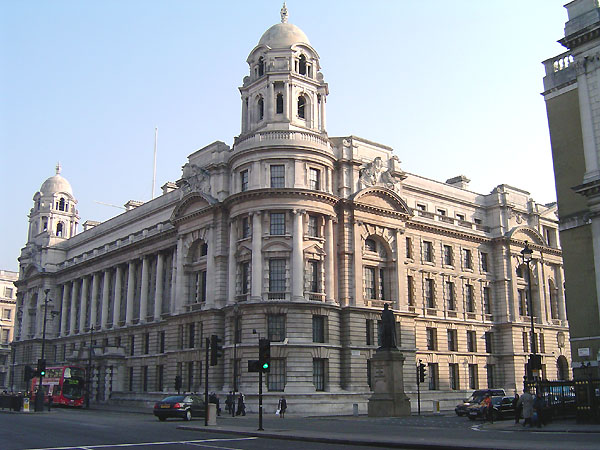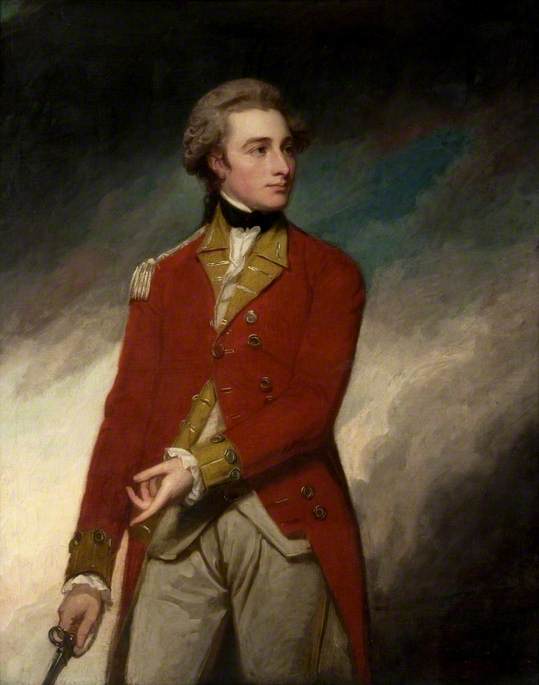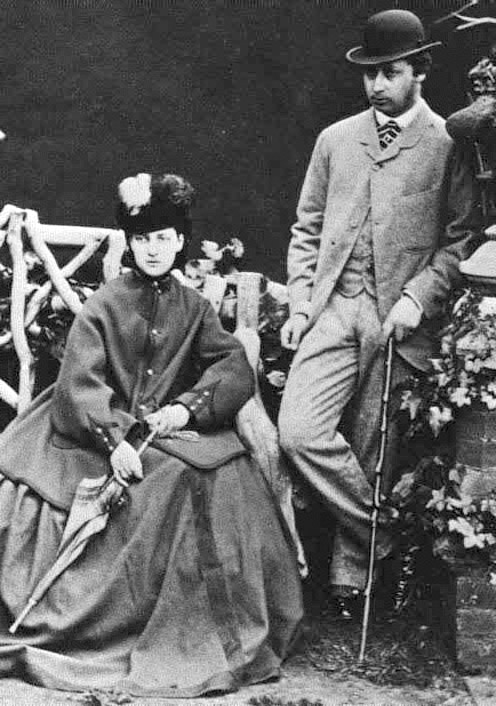|
Raglan Barracks, Devonport
Raglan Barracks was a military installation at Devonport. History The barracks were designed by Captain Francis Fowke to accommodate two entire regiments in transit for operations overseas and were built between 1853 and 1856. Named after FitzRoy Somerset, 1st Baron Raglan, the barracks were built in the colonial style with flat roofs and verandas. The site, which had a huge parade ground, was first occupied by the 96th Regiment of Foot in December 1858. The Prince of Wales presented new colours to the 2nd Battalion The Duke of Cornwall's Light Infantry at the barracks in November 1887 and the Duke of Cambridge presented colours to the 2nd Battalion, The Somerset Light Infantry there in May 1895. The barracks were demolished in the early 1970s. The main gateway, which survives, is a Grade II listed building In the United Kingdom, a listed building is a structure of particular architectural or historic interest deserving of special protection. Such buildings are placed o ... [...More Info...] [...Related Items...] OR: [Wikipedia] [Google] [Baidu] |
Devonport, Plymouth
Devonport ( ), formerly named Plymouth Dock or just Dock, is a district of Plymouth in the English county of Devon, although it was, at one time, the more important settlement. It became a county borough in 1889. Devonport was originally one of the " Three Towns" (along with Plymouth and East Stonehouse); these merged in 1914 to form what would become in 1928 the City of Plymouth. It is represented in the Parliament of the United Kingdom as part of the Plymouth Sutton and Devonport constituency. Its elected Member of Parliament (MP) is Luke Pollard, who is a member of the Labour and Co-operative Party. The population of the ward at the 2011 census was 14,788. History Plymouth Dock In 1690 the Admiralty gave a contract to Robert Waters from Portsmouth to build a stone dock at Point Froward on the east bank of the Hamoaze at the mouth of the River Tamar. Plymouth Dock, as Devonport was originally called, began around 1700 as a small settlement to house workers employed on ... [...More Info...] [...Related Items...] OR: [Wikipedia] [Google] [Baidu] |
War Office
The War Office has referred to several British government organisations throughout history, all relating to the army. It was a department of the British Government responsible for the administration of the British Army between 1857 and 1964, at which point its functions were transferred to the new Ministry of Defence (United Kingdom), Ministry of Defence (MoD). This article contains text from this source, which is available under th Open Government Licence v3.0 © Crown copyright It was equivalent to the Admiralty (United Kingdom), Admiralty at that time, which was responsible for the Royal Navy (RN), and (much later) the Air Ministry, which oversaw the Royal Air Force (RAF). The name 'Old War Office' is also given to the former home of the department, located at the junction of Horse Guards Avenue and Whitehall in central London. The landmark building was sold on 1 March 2016 by HM Government for more than British pound, £350 million, on a 250-year lease for conversion int ... [...More Info...] [...Related Items...] OR: [Wikipedia] [Google] [Baidu] |
Raglan Barracks, Devonport (1879)
Raglan Barracks was a military installation at Devonport. History The barracks were designed by Captain Francis Fowke to accommodate two entire regiments in transit for operations overseas and were built between 1853 and 1856. Named after FitzRoy Somerset, 1st Baron Raglan, the barracks were built in the colonial style with flat roofs and verandas. The site, which had a huge parade ground, was first occupied by the 96th Regiment of Foot in December 1858. The Prince of Wales presented new colours to the 2nd Battalion The Duke of Cornwall's Light Infantry at the barracks in November 1887 and the Duke of Cambridge presented colours to the 2nd Battalion, The Somerset Light Infantry there in May 1895. The barracks were demolished in the early 1970s. The main gateway, which survives, is a Grade II listed building In the United Kingdom, a listed building is a structure of particular architectural or historic interest deserving of special protection. Such buildings are placed o ... [...More Info...] [...Related Items...] OR: [Wikipedia] [Google] [Baidu] |
Francis Fowke
Francis Fowke (7 July 1823 – 4 December 1865) was an Irish engineer and architect, and a captain in the Corps of Royal Engineers. Most of his architectural work was executed in the Renaissance style, although he made use of relatively new technologies to create iron framed buildings, with large open galleries and spaces. Fowke was born in Ballysillan, Belfast. He studied at The Royal School Dungannon, County Tyrone, and the Royal Military Academy, Woolwich. He obtained a commission in the Royal Engineers, and served with distinction in Bermuda and Paris. On his return to England, he was appointed architect and engineer in charge of the construction of several government buildings. Among his projects were the Prince Consort's Library in Aldershot, the Royal Albert Hall and parts of the Victoria and Albert Museum in London, the Industrial Museum of Scotland (Edinburgh Museum of Science and Art) in Edinburgh, and the National Gallery of Ireland in Dublin. He was also resp ... [...More Info...] [...Related Items...] OR: [Wikipedia] [Google] [Baidu] |
FitzRoy Somerset, 1st Baron Raglan
Field marshal (United Kingdom), Field Marshal FitzRoy James Henry Somerset, 1st Baron Raglan, (30 September 1788 – 28 June 1855), known before 1852 as Lord FitzRoy Somerset, was a British Army officer. When a junior officer, he served in the Peninsular War and the Waterloo campaign, latterly as military secretary to the Arthur Wellesley, 1st Duke of Wellington, Duke of Wellington. He also took part in politics as Tories (British political party), Tory Member of Parliament (United Kingdom), Member of Parliament for Truro (Parliamentary borough), Truro, before becoming Master-General of the Ordnance. He became commander of the British troops sent to the Crimean War, Crimea in 1854: his primary objective was to defend Istanbul, Constantinople, and he was also ordered to Siege of Sevastopol (1854–55), besiege the Russian port of Sevastopol. After an early success at the Battle of the Alma, a failure to deliver orders with sufficient clarity caused the fateful Charge of the Light ... [...More Info...] [...Related Items...] OR: [Wikipedia] [Google] [Baidu] |
Veranda
A veranda (also spelled verandah in Australian and New Zealand English) is a roofed, open-air hallway or porch, attached to the outside of a building. A veranda is often partly enclosed by a railing and frequently extends across the front and sides of the structure. Although the form ''verandah'' is correct and very common, some authorities prefer the version without an "h" (the ''Concise Oxford English Dictionary'' gives the "h" version as a variant and '' The Guardian Style Guide'' says "veranda not verandah"). Australia's ''Macquarie Dictionary'' prefers ''verandah''. Etymology ''Veranda'', as used in the United Kingdom and France, was brought by the British from India (, ). While the exact origin of the word is unknown, scholars suggest that the word may have originated in India or may have been adopted from the Portuguese and spread further to the British and French colonists. Ancient and medieval Indian texts on domestic architecture like Vastu shastra uses the word ... [...More Info...] [...Related Items...] OR: [Wikipedia] [Google] [Baidu] |
96th Regiment Of Foot
The 96th Regiment of Foot was a British Army regiment, raised in 1798. Under the Childers reforms it amalgamated with the 63rd (West Suffolk) Regiment of Foot to form the Manchester Regiment. History Formation The regiment was raised in Menorca (then called Minorca) as Stuart's Regiment by Lieutenant-General Sir Charles Stuart from German-speaking prisoners of war of Swiss regiments in Spanish service on 12 December 1798. The regiment embarked for Gibraltar in October 1800 and then sailed on to Abu Qir in Egypt in January 1801 to take part in the Egyptian Campaign. At the Battle of Alexandria in March 1801, Private Antoine Lutz of the regiment distinguished himself by seizing the colour of the 21st ''Demi Brigade Legère''. The colour had initially been captured by Sergeant Sinclair of the 42nd Regiment of Foot but after Sinclair fell in battle, a French officer recovered the colour for his country. Private Lutz shot the French officer holding the colour and took possessi ... [...More Info...] [...Related Items...] OR: [Wikipedia] [Google] [Baidu] |
Edward VII
Edward VII (Albert Edward; 9 November 1841 – 6 May 1910) was King of the United Kingdom and the British Dominions, and Emperor of India, from 22 January 1901 until Death and state funeral of Edward VII, his death in 1910. The second child and eldest son of Queen Victoria and Prince Albert of Saxe-Coburg and Gotha, Edward, nicknamed "Bertie", was related to royalty throughout Europe. He was Prince of Wales and heir apparent to the British throne for almost 60 years. During his mother's reign, he was largely excluded from political influence and came to personify the fashionable, leisured elite. He Wedding of Prince Albert Edward and Princess Alexandra, married Princess Alexandra of Denmark in 1863, and the couple had six children. As Prince of Wales, Edward travelled throughout Britain performing ceremonial public duties and represented Britain on visits abroad. His tours of North America in 1860 and of the Indian subcontinent in 1875 proved popular successes. Despite the ap ... [...More Info...] [...Related Items...] OR: [Wikipedia] [Google] [Baidu] |
Duke Of Cornwall's Light Infantry
The Duke of Cornwall's Light Infantry (DCLI) was a Light infantry, light infantry regiment of the British Army in existence from 1881 to 1959. The regiment was created on 1 July 1881 as part of the Childers Reforms, by the merger of the 32nd (Cornwall) Regiment of Foot, 32nd (Cornwall Light Infantry) Regiment of Foot and the 46th (South Devonshire) Regiment of Foot. The DCLI also incorporated the militia (United Kingdom), militia and Volunteer Force (Great Britain), rifle volunteers of Cornwall. In 1959 the regiment merged with the Somerset Light Infantry, Somerset Light Infantry (Prince Albert's) to form the Somerset and Cornwall Light Infantry. However, this was amalgamated with the Durham Light Infantry, the King's Shropshire Light Infantry and the King's Own Yorkshire Light Infantry to form The Light Infantry which was also merged, in 2007, with the Devonshire and Dorset Regiment, the Royal Gloucestershire, Berkshire and Wiltshire Regiment and the Royal Green Jackets to fo ... [...More Info...] [...Related Items...] OR: [Wikipedia] [Google] [Baidu] |
Prince George, Duke Of Cambridge
Prince George, Duke of Cambridge (George William Frederick Charles; 26 March 1819 – 17 March 1904) was a member of the British royal family, a grandson of King George III and cousin of Queen Victoria. The Duke was an army officer by profession and served as Commander-in-Chief of the Forces (military head of the British Army) from 1856 to 1895. He became Duke of Cambridge in 1850 and Field marshal (United Kingdom), field marshal in 1862. Deeply devoted to the old Army, he worked with Queen Victoria to defeat or minimise every reform proposal, such as setting up a Staff (military), general staff. His Army's weaknesses were dramatically revealed by the poor organisation at the start of the Second Boer War. Early life Prince George was born at Cambridge House, Hanover.Heathcote, p. 141 His father was Prince Adolphus, Duke of Cambridge, the seventh son of King George III and Charlotte of Mecklenburg-Strelitz, Queen Charlotte. His mother was the Duchess of Cambridge (née Princess ... [...More Info...] [...Related Items...] OR: [Wikipedia] [Google] [Baidu] |
Somerset Light Infantry
The Somerset Light Infantry (Prince Albert's) was a light infantry regiment of the British Army, which served under various titles from 1685 to 1959. In 1959, the regiment was amalgamated with the Duke of Cornwall's Light Infantry to form the Somerset and Cornwall Light Infantry which was again amalgamated, in 1968, with the King's Own Yorkshire Light Infantry, the King's Shropshire Light Infantry, and the Durham Light Infantry to form The Light Infantry. In 2007, however, The Light Infantry was amalgamated further with the Devonshire and Dorset Regiment, the Royal Gloucestershire, Berkshire and Wiltshire Regiment, and the Royal Green Jackets to form The Rifles. History Early history Formation The regiment was one of nine regiments of foot raised by James II when he expanded the size of the army in response to the Monmouth Rebellion. On 20 June 1685, Theophilus Hastings, 7th Earl of Huntingdon was issued with a warrant authorising him to raise a regiment, and accordingly th ... [...More Info...] [...Related Items...] OR: [Wikipedia] [Google] [Baidu] |
Listed Building
In the United Kingdom, a listed building is a structure of particular architectural or historic interest deserving of special protection. Such buildings are placed on one of the four statutory lists maintained by Historic England in England, Historic Environment Scotland in Scotland, in Wales, and the Historic Environment Division of the Department for Communities in Northern Ireland. The classification schemes differ between England and Wales, Scotland, and Northern Ireland (see sections below). The term has also been used in the Republic of Ireland, where buildings are protected under the Planning and Development Act 2000, although the statutory term in Ireland is "Record of Protected Structures, protected structure". A listed building may not be demolished, extended, or altered without permission from the local planning authority, which typically consults the relevant central government agency. In England and Wales, a national amenity society must be notified of any work to ... [...More Info...] [...Related Items...] OR: [Wikipedia] [Google] [Baidu] |








